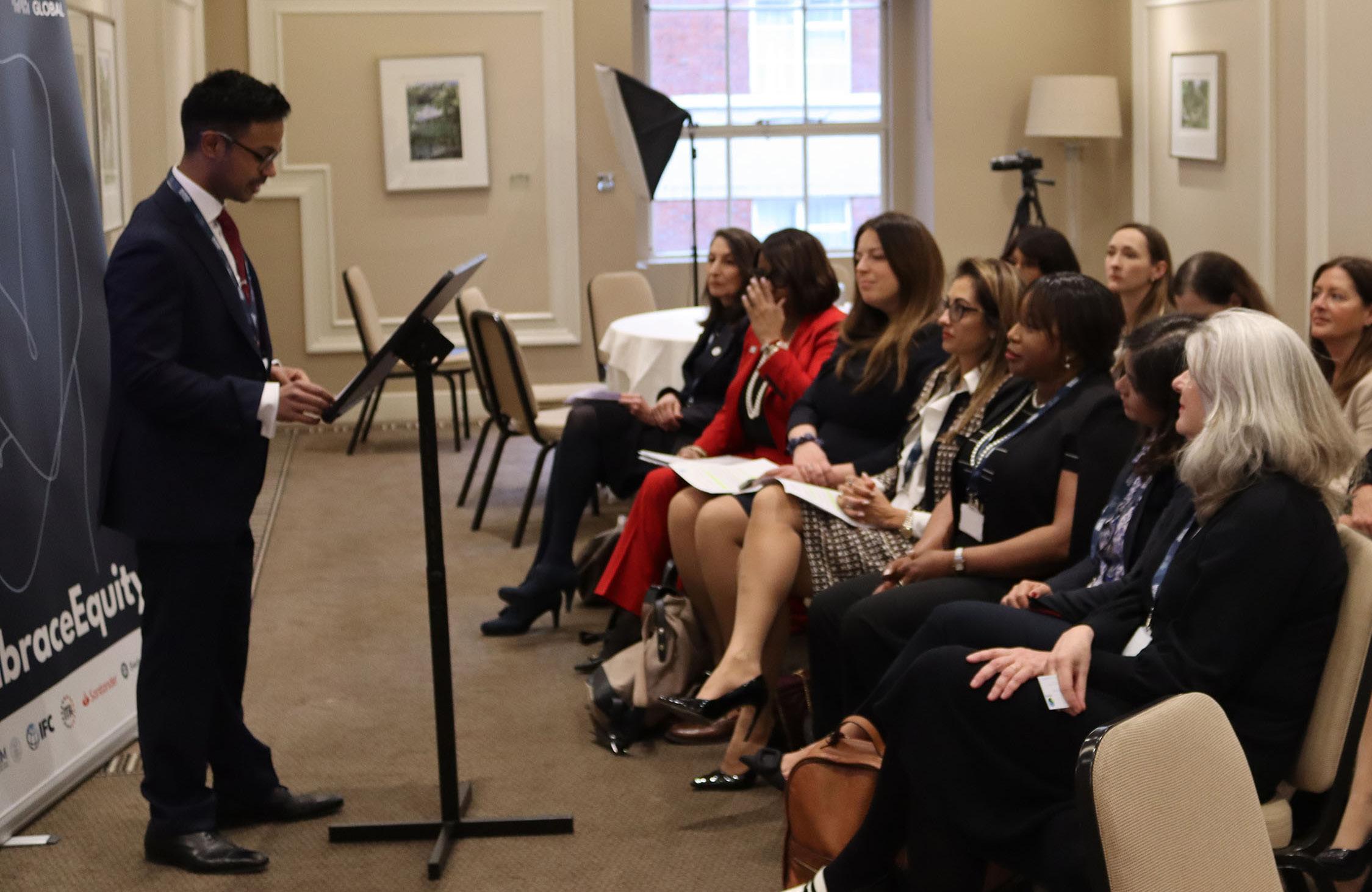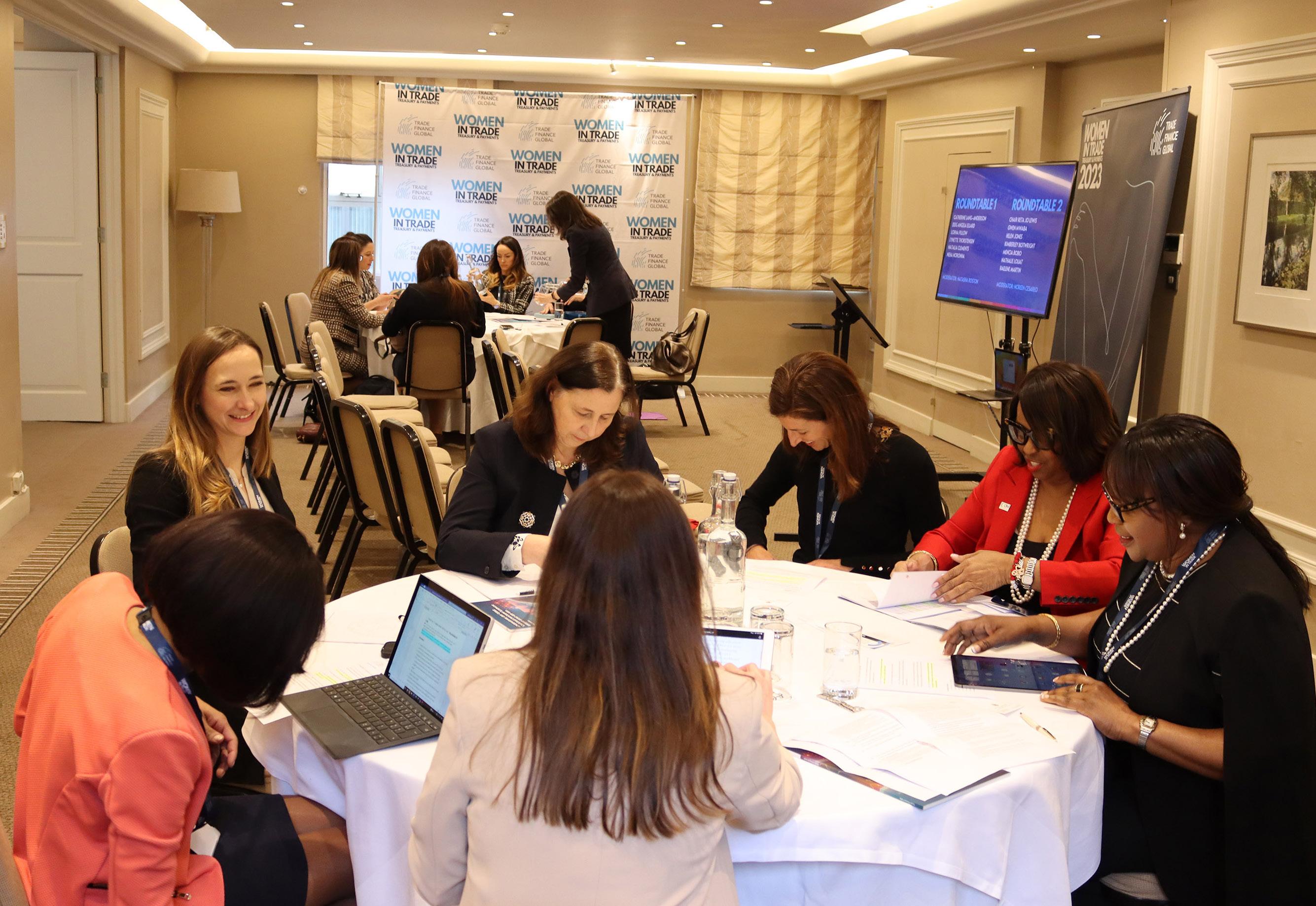
5 minute read
5 challenges women face across trade, treasury, and payments
This roundtable explored the common gender-based challenges women face in the workplace and offered strategies for overcoming them.
From a lack of representation in decision-making processes to unconscious biases and disproportionate family responsibilities, women encounter numerous obstacles that can impede their career growth and success.
As part of Trade Finance Global's (TFG) International Women's Day campaign, we spoke to several prominent female leaders across the trade, treasury, and payments space.
This roundtable explored the common gender-based challenges women face in the workplace and offered strategies for overcoming them.
The roundtable participants included heads of trade finance and trade credit insurance, leaders from several development finance institutions, and trade association board members, representing the voices of trade and asset distribution.
1. Women still face many challenges in the workplace
Participants in the roundtable spoke of their experiences and the everyday challenges women face throughout their careers.
These challenges included needing more female role models, less representation in meetings and decision-making processes, unconscious biases, a tendency to take on undervalued tasks, and balancing work with family responsibilities.
2. Lack of female role models
One commonality amongst the women TFG interviewed were the need for more successful female role models in their fields, particularly career areas where women have traditionally been underrepresented, such as in business and politics.
Fewer mentors to guide women through their career paths may lead to less support and guidance throughout women's careers.

3. Less representation in meetings and decisionmaking processes
TFG noted that women often struggle to have their voices heard in meetings or decisionmaking processes.

They are likely outnumbered and often struggle to assert themselves in male-heavy environments.
4. Unconscious bias
Women face the challenge of being perceived differently due to an unconscious bias that causes people - including other womento may make assumptions about their ambitions, competence, or dedication based solely on their gender.
For example, women may take maternity leave or be less committed to their careers, leading to discrimination and unequal opportunities.
The perception that women are the primary caregiver still exists in society today, and it can impact how they are viewed in the workplace.
5. Embracing undervalued responsibilities
Women are likelier to take on jobs that are not noticed, celebrated, or rewarded and may have to do extra work to prove their value.
They often feel the need to take on tasks not part of their job description to ensure that everything is running smoothly, a phenomenon one participant called organisational dusting. "If you do the dusting at home, no one notices you've done it.
But if you don't do it, it becomes abundantly clear that things need dusting."
When this extends to the workplace - through tasks like getting sandwiches for a meeting or keeping the lunchroom clean - it is organisational dusting. These unrecognised burdens can contribute to burnout and feeling undervalued.
Compounding this lack of recognition is the notion that many women need help promoting themselves, selling their accomplishments, or speaking up in meetings.
Self-promotion could be due to social conditioning, lack of confidence, or fear of being perceived negatively, but ultimately, their contributions are undervalued.
Balancing work and family responsibilities
Both men and women face challenges balancing their personal and professional lives, but the female respondents did not equally feel these pressures.
Many workplace cultures still do not encourage men to take paternity leave, work flexibly, or share the load of being a primary caregiver.
As a result, paternal responsibilities make many men uncomfortable asking for time off, with the perception that this will limit their careers.
Conversely, women face societal pressure to balance work and family responsibilities, which can be challenging and often impact their confidence, work performance, and career advancement.
Women are left to juggle being primary caregivers, which might limit opportunities for career growth.
Differences in genderbased challenges across career stages
Particular challenges remain constant throughout a woman's career, such as the lack of representation and unconscious bias.
While representation has improved considerably over the past few decades, too many industries remain maledominated.
Unconscious bias is also likely to be present throughout a woman's career, although with experience she may develop strategies to help break down these biases.
One participant said: "At the start of my career, naturally, as a female, I didn't take up a lot of space in meetings - I'd sit back and cross my arms - and my voice would be quieter.

I noticed that my peers would sit taller, take up more space, and speak louder. They would come across as more confident and therefore more knowledgeable as a result when actually they weren't."
By recognising these patterns and adapting accordingly, women, and less naturally assertive men, will be better able to have their voices and ideas recognised and valued in an organisational setting.
On the other hand, some challenges are unique to different stages of a woman's career.
For example, early in her career, a woman - like many of her male counterparts - is more likely to have the time and energy to devote to her work. As she gets older, however, other responsibilities like family and domestic duties - which women are often still disproportionately responsible for - may take over.
As one participant said: "There is no more: 'I'll work late tonight, I'll make this work, I'll close this deal'. It becomes: 'How am I going to get this deal done by 4:30 PM? Because if I'm not at the nursery by 6 PM, it shuts. What do I do with my children?'"
Not only do these responsibilities often cause a woman to scale back on her work, but it also forces her to navigate the complex trade-offs between work and family, which can be emotionally and mentally challenging.
Differences in genderbased career challenges across the developing world
The challenges faced by women in developing regions of the world are similar to those faced by women in developed areas, but the nature of these challenges is different.
The fundamental issues are the same - such as patriarchal norms that limit women's access to education, land ownership, and other opportunities - however, women in developing regions face additional challenges - such as lack of access to technology, basic infrastructure, and transportation.
These women may also face cultural barriers that limit their ability to pursue careers. A lack of support and available resources can make it difficult for women to break out of such cycles.
In recent years there have been more grassroots capacitybuilding programs, primarily driven by non governmental organisations (NGOs), that are working to address these issues and provide support and resources to women in developing regions.
Fairtrade International provides training programmes such as the Women’s School of Leadership in Côte d’Ivoire to directly address capacity-building programmes aimed at women.
Addressing these challenges requires the involvement of multiple sectors, including government, civil society, and the finance sector.
By working together and breaking down barriers, it is possible to create more equitable opportunities for women in developing regions of the world.
Despite the lingering challenges, the industry has been making progress
While many challenges remain, it is difficult to deny the progress has been made in terms of increasing the representation of women in leadership positions in the workplace.
One participant described the progress made in her team, which is now comprised of about 50% men and women. This is unusual for most organisations, but it shows that progress can be made when more women are included in decision-making and leadership roles.
As more women reach positions of authority in their organisations, they will be able to help others that follow reach similar roles, which is an essential step towards catalysing gender equality in the workplace.
One participant said: "If you have a group of 10 people and there is only one woman, the perception is that she represents all of womankind. If there are only two women, the perception is that they are always colluding with each other.
But when you get to three women, that's where they just become part of the group of 10. From that point, that's where this fixes itself without needing too much intervention anymore."
With further awareness and collaboration, more organisations worldwide will be able to reach and surpass this tipping point and begin to see real and lasting change.










